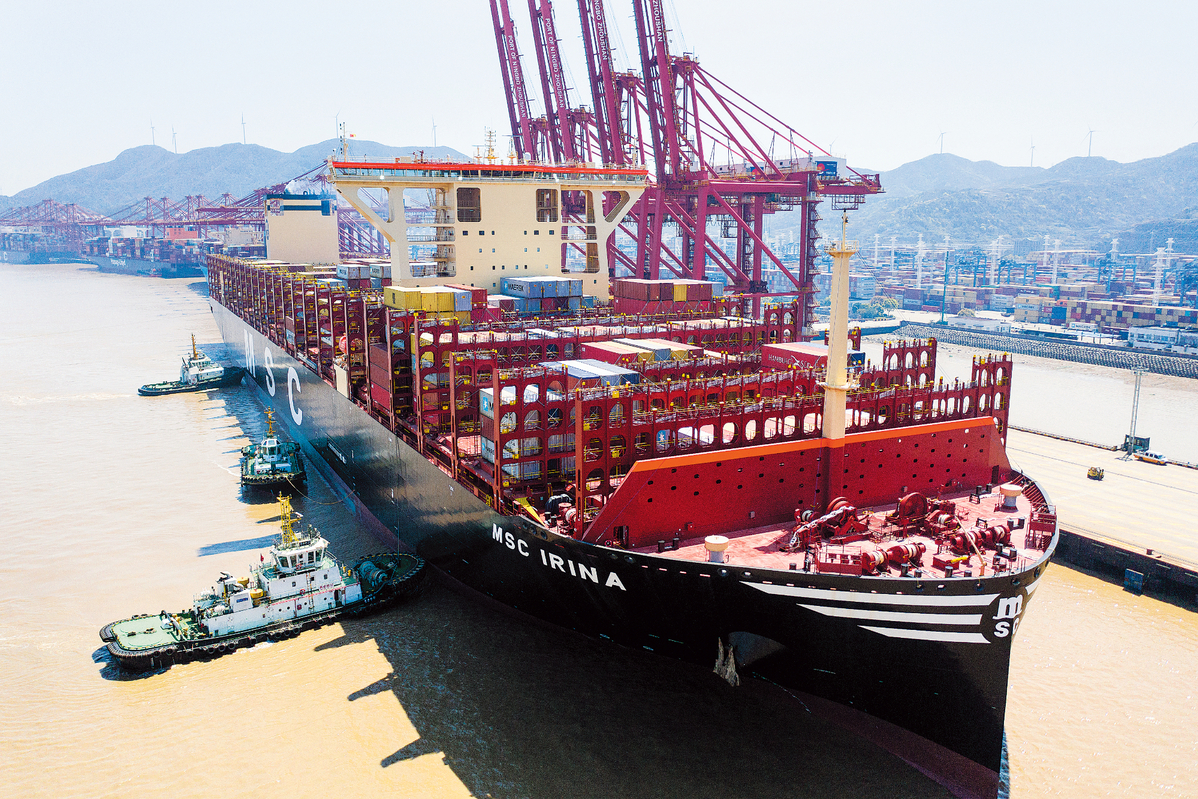Foreign trade to stay resilient in second half

China's foreign trade, underpinned by an improved overseas appetite, an optimized trading structure increasingly driven by high-tech and green products, and more diversified export destinations, will continue to show resilience in the second half of the year, officials and experts said on Friday.
That said, businesses in the sector face a complex and challenging external environment marked by escalating geopolitical tensions and increasing trade restrictions, they added, calling for stronger policy support and the cultivation of new growth drivers to counterbalance the negative impacts.
Preliminary estimates suggest that China's export share in international markets is expected to remain stable at around 14 percent for the first half of the year, said Li Yongjie, deputy International Trade Representative of the Ministry of Commerce.
The global economy is showing signs of improvement, with external demand picking up and Chinese businesses in the foreign trade sector benefiting from increased orders.
However, despite a moderate recovery in global trade of goods, the increasing complexity and severity of the external environment pose significant difficulties for the trade sector, Li said.
The number of import restrictions, according to a trade monitoring update by the World Trade Organization in July, implemented by member countries, has surged, with measures already in effect expected to affect $2.3 trillion worth of imports in 2024. This represents 9.7 percent of total global imports, the highest level since 2020.
"We will make full use of multilateral and bilateral mechanisms to support our enterprises in addressing the challenges posed by unfair trade restrictions," Li said, adding that the country will work closely with its trading partners to ensure the stable and smooth operation of global industrial and supply chains.
To this end, China will further expand the globally oriented network of high-standard free-trade areas, with a focus on accelerating its accession to the Comprehensive and Progressive Agreement for Trans-Pacific Partnership and advancing negotiations with multiple countries and organizations.
China aims to further strengthen economic ties with its free-trade agreement partners and increase the share of its trade with them to around 40 percent of its total trade value by 2030, according to the ministry.
Moreover, China will actively foster new driving forces in foreign trade to optimize its product structure and boost trade efficiency, in response to shifting market dynamics and international demand, said Li Xingqian, director-general of the ministry's department of foreign trade.
The cross-border e-commerce sector, which reported a year-on-year growth rate of 10.5 percent in the first half of the year and outpaced the overall growth rate of the country's foreign trade by 4.4 percentage points, will be further supported, Li said.
In addition, China should further drive traditional industries to upgrade toward high-value-added, high-tech and green industries in an effort to enhance their competitiveness, and optimize export structures, said Zhang Jianping, a researcher at the Chinese Academy of International Trade and Economic Cooperation.
Though trade restrictions tipped by major economies such as the European Union and the United States could exert some pressures, China's electric vehicles, characterized by advanced technology and cost-effectiveness, could veer into emerging markets such as the Middle East, Southeast Asia and Latin America, Zhang added.
